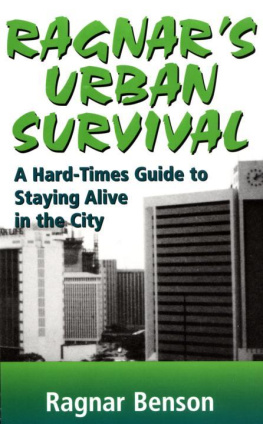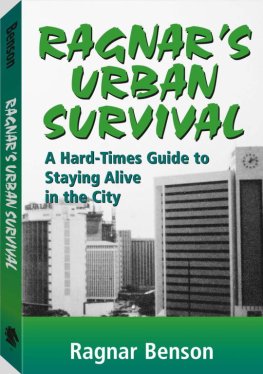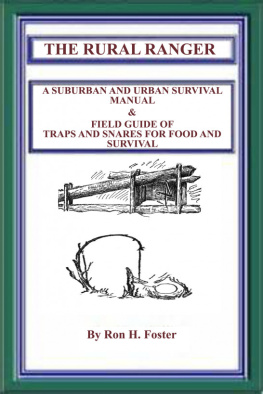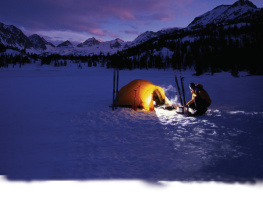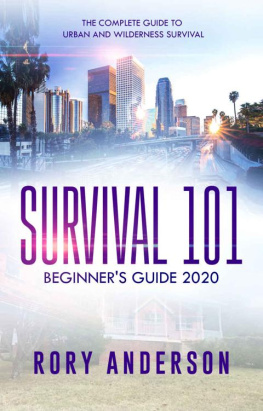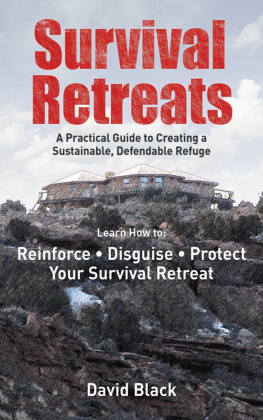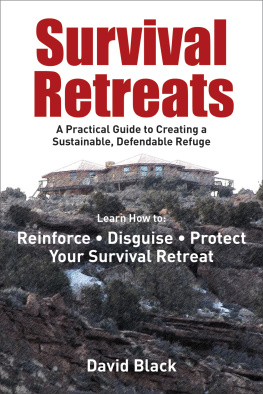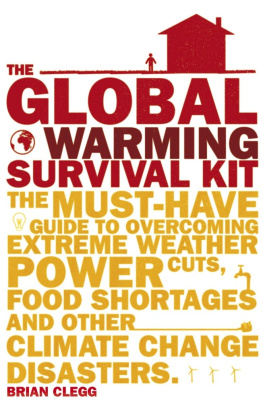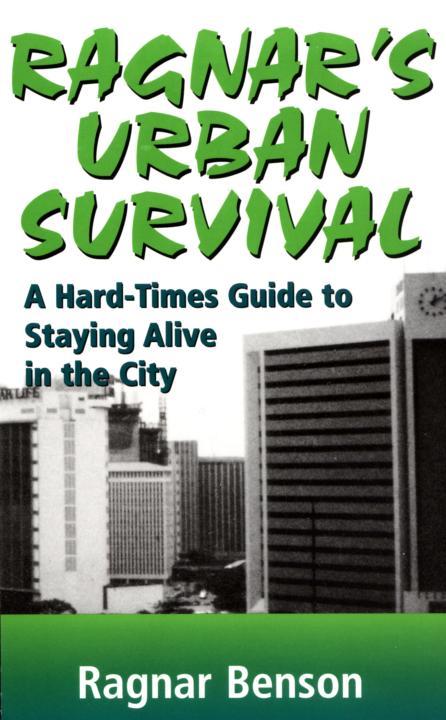
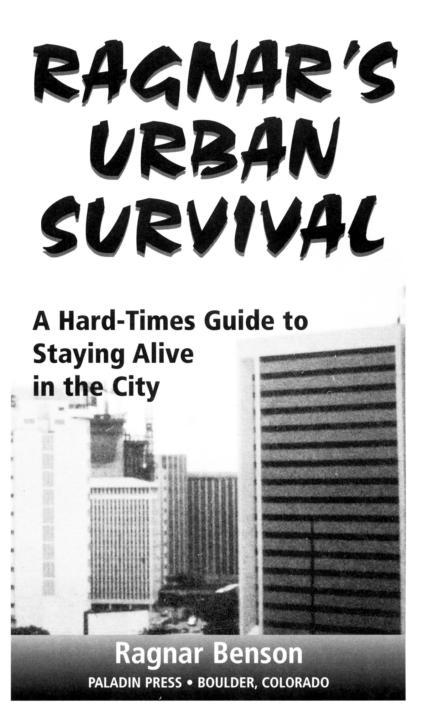
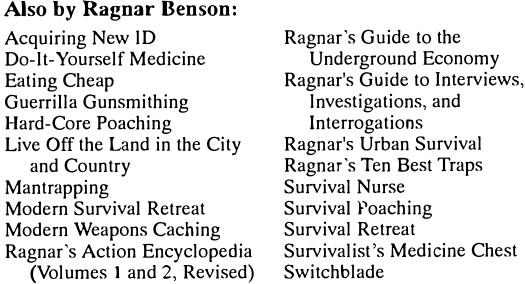
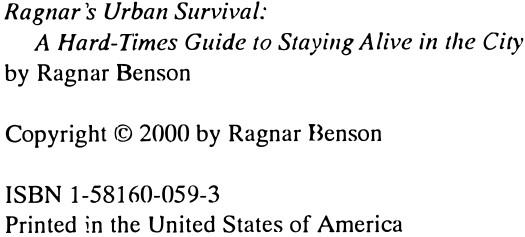
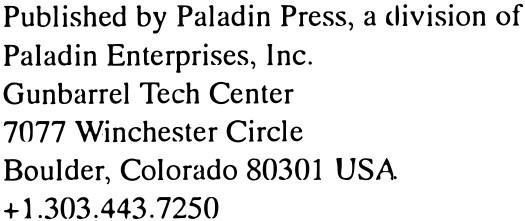

Table of Contents

Chapter 1: 7
Chapter 2: 19
Chapter 3: 29
Chapter 4: 37
Chapter 5: 55
Chapter 6: 73
Chapter 7: 99
Chapter 8: 119
Chapter 9: 131
Chapter 10: 143
Chapter 11: 157
Chapter 12: 173
Warning

Technical data presented here, particularly data on ammunition and on the use, adjustment, and alteration of firearms, inevitably reflect the author's individual beliefs and experiences with particular firearms, equipment, and components under specific circumstances that the reader cannot duplicate exactly. The information in this book should therefore be used for guidance only and approached with great caution. Neither the author, publisher, nor distributors assume any responsibility for the use or misuse of information contained in this book.
Preface

I am frequently asked if city survival is similar to survival in the country or wilderness. Answering that question is a major premise of this book. Since what many people consider wilderness survival actually refers to recreational activities-frequently practiced by elitist yuppies in SUVs- we must set these practices aside before we can answer the question: Is city survival different from rural survival?
The short answer is that city survival is very much like rural survival, only different. It is identical in that the same basic Rule of Threes applies in either place, and that the Rule of Survival Thermodynamics also is still in force. (You'll learn about these rules soon.) None of these basics has been repealed.
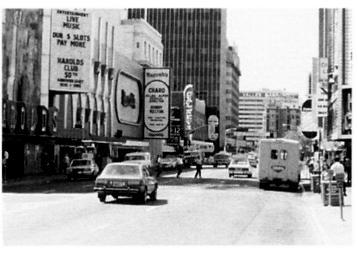
A great many cities have been the scene of vicious battles already in the 20th century. It is foolish not to plan for such in the 21st century.
We also know that caching and storage remain cornerstones of any survival program. The same is true of the rule about avoiding falling into refugee status.
Hunting and gathering skills are still necessary in the city, however, these skills will be adapted to the city environment. Renewable sources of food can be established, but again, they will be much different from their rural counterparts.
Shelter is perhaps initially easier to find in the city, but the dangers of theft, bullying, and depredation will be much greater. Understanding the need for secrecy while living among large numbers of people is very important.
Rural survivalists can, in my opinion, make do without guns. Some notable 20th century survivors, such as Bill Moreland-who survived alone for 13 years in Idaho's rugged Clearwater National Forest-did without guns for an extended period of years. In the city it's an entirely different matter. Not only are firearms vital, at least some must be silenced. We had better know how to make and deploy effective silencers.
As a boy in post-World War I Germany, my father walked 3 miles per day carrying two 25-liter (approximately 5 gallon) cans to the river and back. There was a group of revolutionary German soldiers continually trying to shoot anyone-especially kids-out on the street; the reason why is lost in history. Logic suggests that poison gas from incessant warfare continually swirling around them would have poisoned the water, but no one died from the water. Finding potable water in a city survival situation can be an incredible problem. Without advance preparation, the situation could be terminal.
With a shortage of water, irrigating a garden will be a challenge and may violate the Rule of Survival Thermodynamics. But city gardens are still possible. They are being raised successfully even as I write, although :hey are too often of an ornamental or hobby nature.
City survivors frequently neglect planning for caching and food storage till it is too late. Raised, or perhaps more accurately, managed, livestock as a renewable source of food is also possible. These activities are not intuitive, and those who try to learn after the flag goes up will become casualties.
What about energy in the city? It's required to cook, preserve food, heat, and provide light. It's necessary for travel and communications, as well. City survivors have more options regarding energy, but these must entail extremely clever procurement and deployment strategies-much more so than in rural situations. My experts who have been there and done that will speak to this issue.
Food in the city, no matter how it's procured, arrives in a great rush. At harvest time, fruits and vegaetables must be quickly dealt with before they spoil. Where livestock is available, city dwellers will need to learn all the survival tricks of slaughtering, butchering, storing, and preserving meat.
One thing that will be dramatically different for people used to city life is the extent to which survivors niust band together for mutual protection and specialization. Voluntary specialization is a characteristic of any free, successful economy. For everyone's benefit, people must be free to do whatever they do best and to trade for their best price. Without these mechanisms, the wrong goods are produced in the wrong quantity and quality Survivors, unskilled in certain areas, are forced to spend precious hours doing for themselves what other, more skilled people could do better, quicker, and cheaper for them. Every society moves to specialization, either under the table or on the table. Unless specialization occurs fairly quickly, there won't be enough hours in the day to get everything done. Survival is not an activity for the lazy.
Resourceful, learned scrounging has always played a major role in any city survival program. We need to think about these skills now
In this volume I will share what I've learned about surviving in the city-that is my commitment to readers. Because as many others have learned the hard way, the need for these skills can occur with lightning-like suddenness.
-Ragnar Benson
Introduction

Open space between our cities seems to be disappearing, often with a puzzling intensity and speed. What was just a few short years ago raw countryside filled with idyllic little farms, quaint, remote villages, and gravel roads has been developed into government office complexes, apartment complexes, cinema complexes, and parking complexes.
Next page
